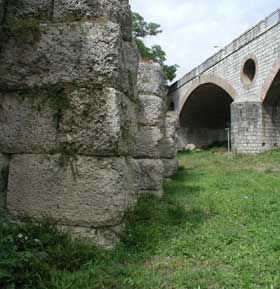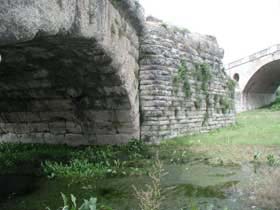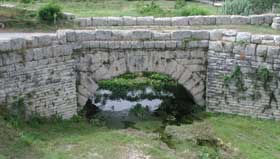
The Romans constructed the Roman bridge over the course of 400 years. The first part of the construction, known as the "last republican period," focused on the creation of the two arches of the bridge. In order to construct the arches, the Romans used a successful technique that was complicated and unique. Lacking the technology to bind the large stones together, the builders gathered a large pile of sand around which they placed the stones of the arches. Once the stones were arranged, they pushed the sand away, leaving the bridge and its arches standing.


NEXT
